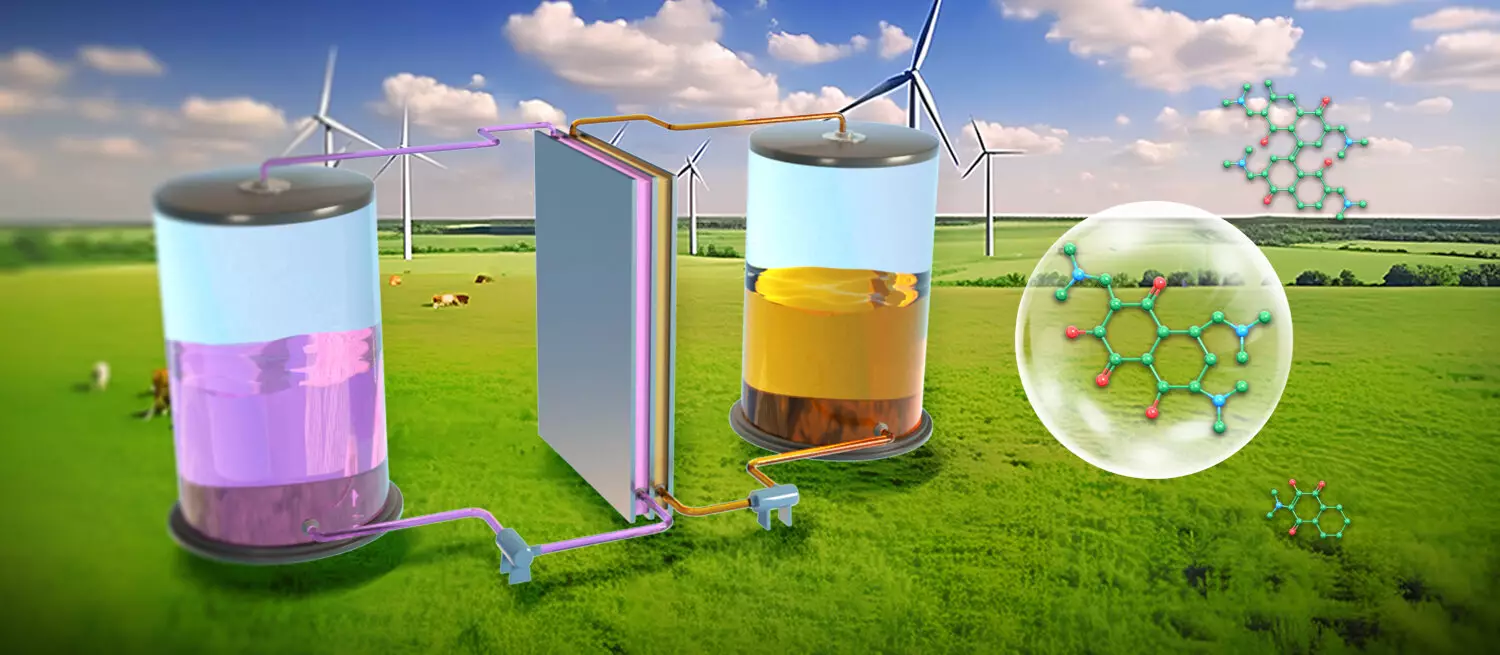Organic redox-active molecules (ORAMs) have emerged as promising candidates for sustainable energy storage solutions, especially within the context of aqueous organic flow batteries (AOFBs). The unique molecular structures of ORAMs offer both diversity and accessibility, presenting opportunities for cost-effective energy solutions. However, a significant concern remains their stability during the operational phases of charging and discharging. Instabilities not only curtail the redox activity of these molecules but can also lead to unwanted side reactions, ultimately diminishing the efficacy of the battery system. Therefore, addressing air stability is a pivotal hurdle that researchers face, as several ORAMs rapidly deactivate upon exposure to atmospheric conditions.
A collaborative team led by Professor Li Xianfeng and Professor Zhang Changkun from the Dalian Institute of Chemical Physics (DICP), part of the Chinese Academy of Sciences, has made remarkable strides in overcoming these challenges. Their research, published in the esteemed journal *Nature Sustainability*, highlights the synthesis of new naphthalene derivatives that incorporate active hydroxyl and dimethylamine groups. These innovative compounds demonstrate exceptional air stability and have been effectively utilized as catholytes for AOFBs. This advancement signifies a monumental step toward achieving not only long-term cycling stability but also the potential for broader applicability in real-world energy-storage contexts.
The strategic approach adopted by the researchers involved a hybrid method that combined chemical synthesis with in situ electrochemical techniques, streamlining the preparation of these active naphthalene derivatives. This dual-method reduced production costs and simplified purification, thereby enhancing the practicality of a scalable solution. During their electrochemical investigations, the team uncovered significant structural transformations in the naphthalene derivatives, indicating rigorous activity that protects against adverse side reactions while simultaneously boosting the solubility of the compounds in aqueous environments.
The operational success of the naphthalene-based AOFB was marked by impressive performance metrics: the system exhibited a stable cycling performance over 850 cycles, equating to roughly 40 days, maintaining a capacity of 50 Ah L-1. Notably, the battery system retained its operational integrity even in scenarios involving constant air flow, sustaining approximately 600 cycles (approximately 22 days) without any noticeable degradation in capacity or efficiency. This aspect points directly to the innovation’s air stability, a crucial factor in its viability.
An important feature of this research is its scalability; the team successfully scaled the preparation process to a kilogram-level output, achieving production of up to 5 kg per synthesis batch. In practical applications, pilot-scale battery stacks containing these naphthalene derivatives yielded an average system capacity of around 330 Ah, while maintaining remarkable cycling stability across 270 cycles (around 27 days), with a capacity retention rate of an astonishing 99.95%.
The implications of this research are profound. As emphasized by Professor Li, this innovative approach paves the way for new molecular designs focused on air-stable technologies, potentially revolutionizing electrochemical energy storage systems. The marriage of high performance with simplified, cost-effective synthesis strategies positions these naphthalene derivatives at the forefront of sustainable energy storage, promising a more efficient and environmentally friendly future.


Leave a Reply